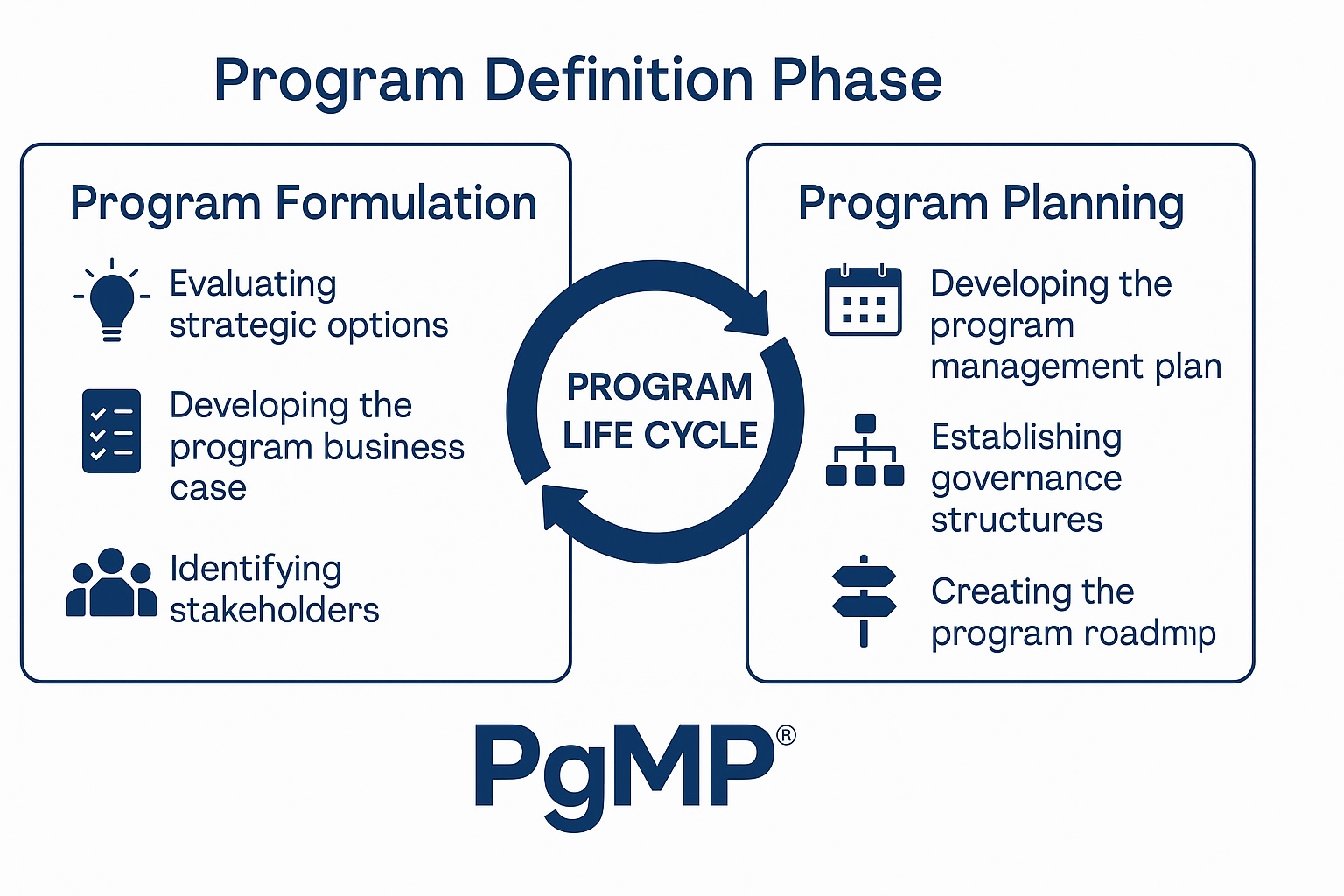PgMP
Program Life Cycle – Program Definition Phase
Program Life Cycle – Program Definition Phase
(Understanding Program Formulation vs Program Planning)
One of the most common confusions among PgMP aspirants?
The difference between program formulation and program planning.
At first glance, they both sound like “planning” — but in reality, they serve two entirely different purposes.
In this blog, I’ll walk you through what each subphase means, where it fits in the Program Definition Phase, and how to clearly distinguish between them using a real-world example from the telecom space.
Program Formulation: Strategic Evaluation & Commitment
Think of this as the “should we do it?” phase.
At this stage, the organization is evaluating different options to move forward with. The governing body, executives, and strategic leaders assess which program initiatives align best with their long-term goals, risk appetite, and external environment.
Let’s say a telecom giant like Jio is exploring:
-
Launching 6G infrastructure
-
Expanding rural connectivity
-
Creating an OTT entertainment platform
-
Doubling down on prepaid plans
Each of these is a possible program, and formulation is about evaluating them based on:
-
Strategic alignment
-
Long-term benefits and ROI
-
Political or environmental factors
-
Risks and uncertainties
The result? A well-thought-out program business case, initial benefits profile, and program charter — all of which justify why this program should move forward.
This phase is about decision-making and prioritization — not execution.
Program Planning: Structuring the Chosen Path
Now it’s time to answer: “How will we deliver this program?”
Once the program idea is approved in the formulation phase, it moves into detailed planning. This isn’t brainstorming anymore — this is about laying the foundation for execution.
This phase involves:
-
Creating the Program Management Plan
-
Developing a Benefits Realization Plan
-
Establishing the Program Roadmap
-
Identifying components
-
Laying out the governance structure and stakeholder engagement plan
The program manager, with inputs from key stakeholders, prepares the tools, structure, and oversight needed to start delivering real value.
Recap: The Key Difference

Let’s put it simply:
-
Formulation: Should we do this program? (Strategic thinking)
-
Planning: How will we do this program? (Tactical structuring)
This distinction is vital — because mixing the two can lead to executing a program that wasn’t even clearly thought through.
Final Thought
So the next time someone says, “We’re planning a new program,” ask them —
“Are you still deciding what to do, or are you ready to deliver?”
That one question could save months of wasted time, money, and energy.

